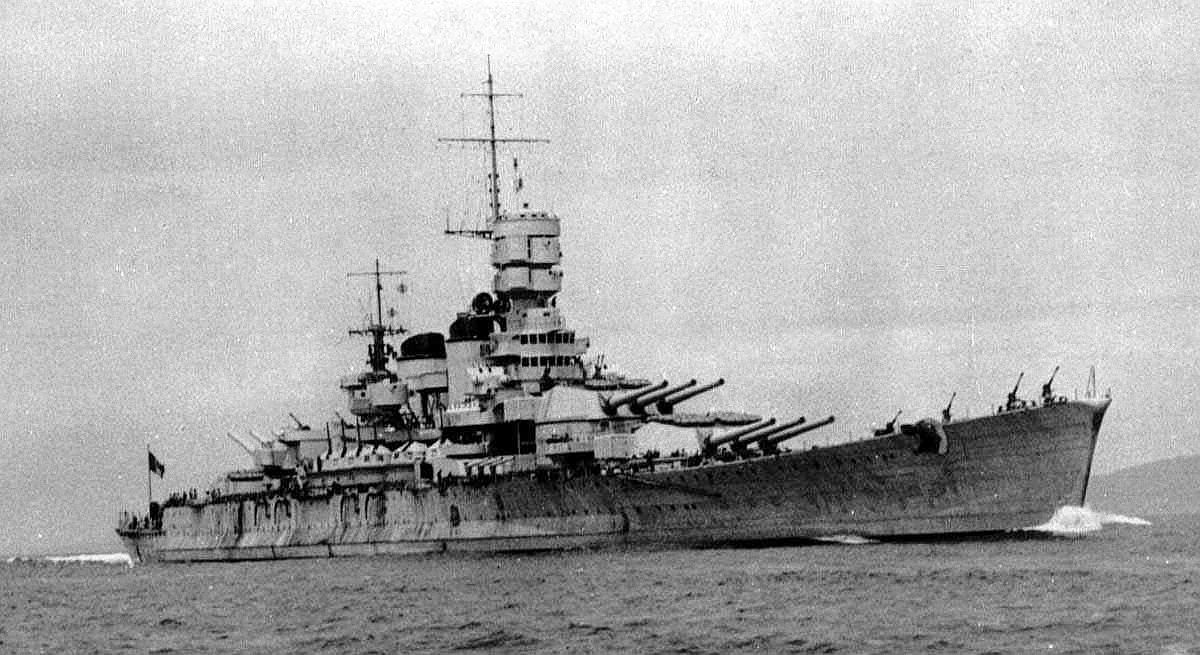When the Dornier Do 217 used the radio-guided, free-fall “Fritz X” weapon to sink the Italian battleship Roma, it made aviation history by being the first military aircraft to use a precision-guided bomb in combat
The Dornier Do 217, which took over for the Do 17 in frontline service from the middle to the end of 1941, had a significantly greater bomb load capacity and range. Although the Do 217 was first only deployed as a bomber, later modifications allowed it to perform the duty of a precision maritime strike. The Do 217 was modified to launch glide bombs in order to carry out the latter objective; units using these innovative weapons saw considerable success in the Mediterranean starting in the autumn of 1943.
When the Do 217 used the radio-guided, free-fall “Fritz X” weapon to sink the Italian battleship Roma shortly after Italy’s capitulation in September 1943, it made aviation history as the first military aircraft to use a precision-guided bomb in combat.
Following the Operation Avalanche landings in Salerno, on the southwest coast of Italy, which began on September 3, 1943, things were busy for Luftwaffe Dornier Do 217 crews, as described by Chris Goss in his book Dornier Do 217 Units of World War 2. The Allies were fortunate that the Italians surrendered five days later because the Regia Marina’s main warships were supposed to be assaulting the landings. Instead, a 17-ship fleet, including the battleships Roma, Vittoria Veneto, and Italia, sailed from La Spezia on September 9 in an effort to keep the ships out of German hands. When the Luftwaffe learned about the Italian plans, they sent III./KG 100 to attack them with ‘Fritz X’ guided bombs.
III./KG 100 Do 217s followed the fleet until it reached the Strait of Bonifacio between Sardinia and Corsica, where 11 aircraft launched an attack at 15:37 local time.
It is believed that the first strike was led by Major Bernhard Jope, whose observer, Unteroffizier Lori Klapproth, achieved a near miss that temporarily jammed Roma’s rudder. A second attack wave, led by Oberleutnant Heinrich Schmetz, saw Unteroffizier Heinrich Penz, observer to Leutnant Klaus Deumling of 7./KG 100 who was on his first mission, hit Roma on the starboard side. Photographic evidence exists of the attack by Unteroffizier Eugen Degan, the observer in Oberfeldwebel Kurt Steinborn’s Do 217K-1 of 7./KG 100, who also reported hitting Roma on the starboard side. At the same time, Roma’s sister ship Italia was attacked.
The ship was damaged by the second glide bomb that struck Roma, which detonated beneath the keel. The boiler and engine rooms were submerged in water, and the entire ship was engulfed in electrical flames. When Roma slowed down, another “Fritz X” from a second wave of seven Do 217s exploded in the forward engine room at 1602 hours. Then there were more flames, flooding, and an explosion in the magazine of the No. 2 main turret. Further flooding ensued, at which point Roma started to sink bow first until it broke in half and capsized. At least 1253 crew members perished along with the ship, and 593 men were rescued.
Italy had more luck because the “Fritz X” that struck it forward of the No. 1 main turret pierced the ship, made its way out of the hull, and then detonated in the water below the ship. The battleship limped into Malta port in spite of the latter’s hole, which allowed 1060 tons of water to enter.
Dornier Do 217 Units of World War 2 is published by Osprey Publishing and is available to order here.
Photo by Laststandonzombieisland.com and unknown via Wikipedia


